Greatest Mysteries of Science
By Swayam Ganguly
Ever since its evolution billions of years ago, Earth’s history has been home to life in one weird form or another (including men and women). There have also been various mysteries, which are still unsolved though science has been used as a tool to explain these mysteries from time to time. But there exist certain mysteries within the realm of science itself which continue to perplex and mystify. At the risk of sounding arty, I must confess that science has always been a mystery of consummate proportions to me. We shall explore three of these burning issues which though simple in nature are really rather complex. Just like science itself!
How did life arise on Earth?
Some scientists are of the view that the earliest evidence for life on Earth comes from fossilized mats of cyanobacteria called stromatolites in Australia that are about 3.4 billion years old.
Fair enough. But despite knowing approximately when life first appeared on Earth, scientists are still far from answering how it appeared. I mean, it’s cool to coin a term which is tough to pronounce but can someone answer the question please? There are several competing theories of course which only makes things even more confusing. Some say that life didn’t actually begin on Earth but came from a distant world or the heart of a fallen comet or asteroid.
Then there is the RNA World hypothesis which is my favorite only because it sounds so scientific. Most scientists are of the opinion that the RNA was the head-honcho molecule which guided life in its initial nascent stages. RNA is very similar to DNA, and today carries out numerous important functions in each of our cells, including acting as a transitional-molecule between DNA and protein synthesis, and functioning as an on-and-off switch for some genes. But the RNA World hypothesis doesn’t explain how RNA itself first arose. Like DNA, RNA is a complex molecule made of repeating units of thousands of smaller molecules called nucleotides that link together in very specific, patterned ways. While there are scientists who think RNA could have arisen spontaneously on early Earth, others say the odds of such a thing happening are astronomical.
“Many theories of the origin of life have been proposed, but since it’s hard to prove or disprove them, no fully accepted theory exists,” said Diana Northup, a cave biologist at the University of New Mexico.
Thanks Diana. Back to square one! But the answer to this question would not only fill one of the largest gaps in scientists’ understanding of nature, but also would have important implications for the likelihood of finding life elsewhere in the universe. But one thing is clear. The solution of a mystery of this magnitude is totally unpredictable. It might happen next week or it might take a thousand years. My guess is it won’t happen ever and coming from an eternal optimist, that does sound depressing. It’s like that classic question “What came first? The chicken or the egg?“ Ah, well! Science doesn’t have an answer for that one as well!
What Causes Gravity (the mystery force)?
Remember the time when you were kids playing war games in the yard? Your desire to be superman and fly like a bird was stifled and you wondered why till you discovered the concept of gravity in school.
What is gravity?
In 1686 Isaac Newton asked this question and reached the conclusion that it was an attractive force between all objects. The same force that caused an apple to fall to the ground also held the moon in its orbit. The presence of gravity is evident in the deepest depths of space where it tugs on matter to form stars, galaxies and black holes. But it is a mysterious force, as scientists can’t measure it in the laboratory as easily as they can detect its effects on planets and stars. Gravity holds us firmly on the ground and keeps the earth circling the sun.
This invisible force also draws down rain from the sky and causes the daily ocean tides. It keeps the earth in a spherical shape, and prevents our atmosphere from escaping into space. It would seem that this everyday force should be one of the best understood concepts in science. However, just the opposite is true. In many ways, gravity remains a profound mystery. Gravity provides a stunning example of the limits of current scientific knowledge. But kudos to Newton for exploration of thought post a fallen apple. Many I know, including myself would have been happy just consuming the apple.
Xavier Siemens, a gravitational theorist at the University of Wisconsin Milwaukee says, “At this point it seems like science fiction. Theoretically, however, we should be able to detect single gravitons. But how is the big question.”
Does Alien Life Exist?
This is the big question man has been asking for ages now. UFO sightings are often reported (mostly in the U.S.A but so what?) and most of us believe that there could be life out there. Aliens and their spacecrafts have been depicted in early cave paintings as well as popular culture.
Whether a bounty of life exists elsewhere in the universe is one of the oldest and most tantalizing questions of science. Considering the wide breadth of the universe and the countless stars it contains, the odds would seem in favor of the answer being “yes.”
Many scientists, such as Carl Sagan, believe that it is nearly impossible that no other intelligent life exists in the universe. “We are here, made of stardust. Therefore, it is at least possible that there are others,” said Jill Tarter, director of the Center for SETI Research in California. You know something Jill? This was pondered over by me when I was five years old. So how about an original thought?
Pointy- eared aliens traveling at light speed are staying firmly in science fiction, but scientists are offering fresh insights into the possible existence of inhabited worlds and intelligent civilizations in space.
There may be 100 billion Earth-like planets in the Milky Way, or one for every sun-type star in the galaxy, said Alan Boss, an astronomer with the Carnegie Institution and author of the new book “The Crowded Universe: The Search for Living Planets.”
The Boss man made the prediction based on the number of “super-Earths” – planets several times the mass of the Earth, but smaller than gas giants like Jupiter, discovered so far circling stars outside the solar system.
The age old question- Are we alone in the universe? lies unanswered and is one of the glaring scientific mysteries. It does seem unlikely that we are the only life forms in this vast universe if we ponder logically but so far although planets have been discovered signs of life are still not visible.
Try and penetrate with our limited means the secrets of nature and you will find that, behind all the discernible concatenations, there remains something subtle, intangible and inexplicable.
– Albert Einstein
The author’s novel titled “Love Films and Rock n Roll” (Alchemy Publishers) has been released recently.
“Good, Bad and Ugly” (Supernova Publishers) is slated for release soon.



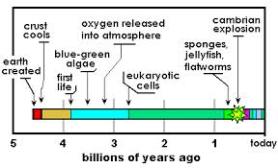
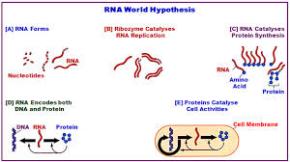







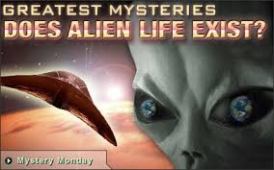
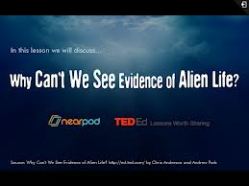
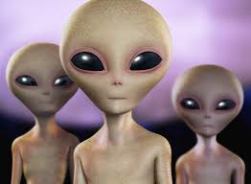

Leave a comment